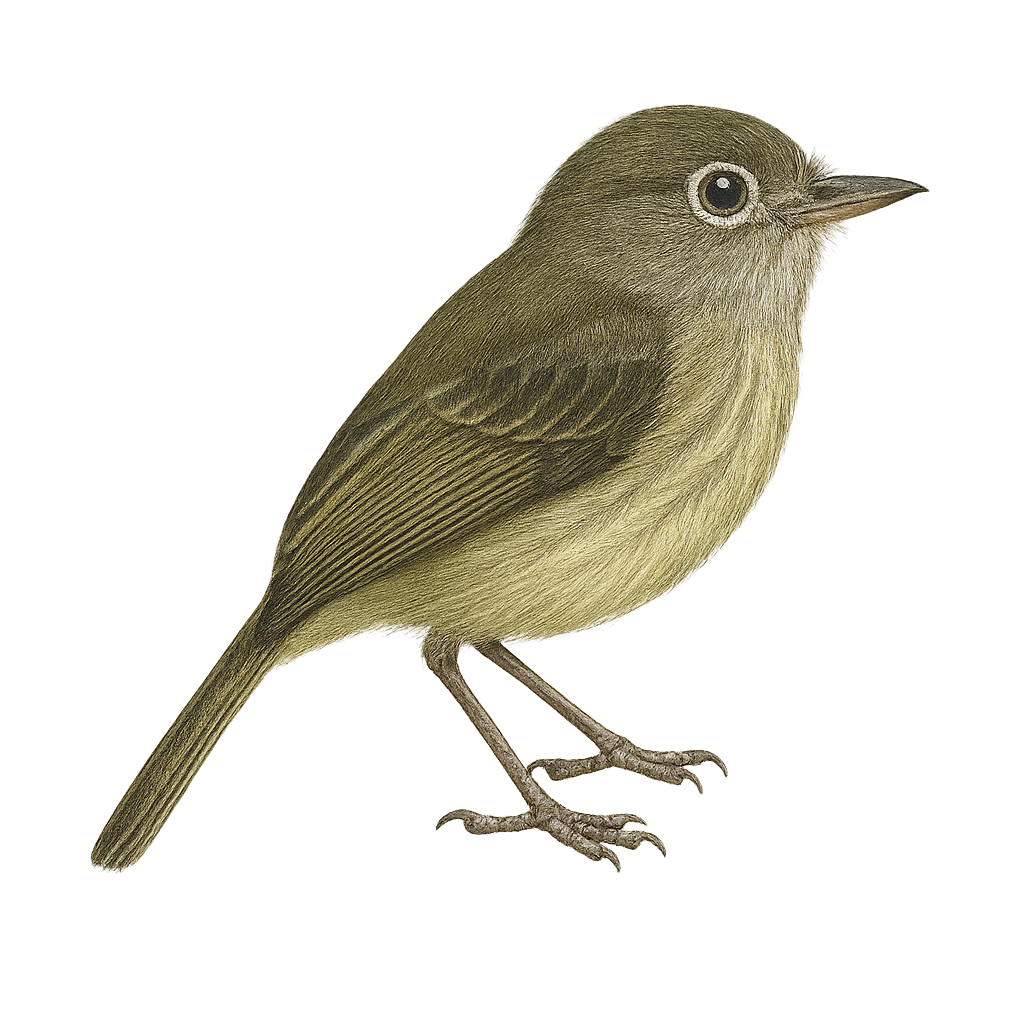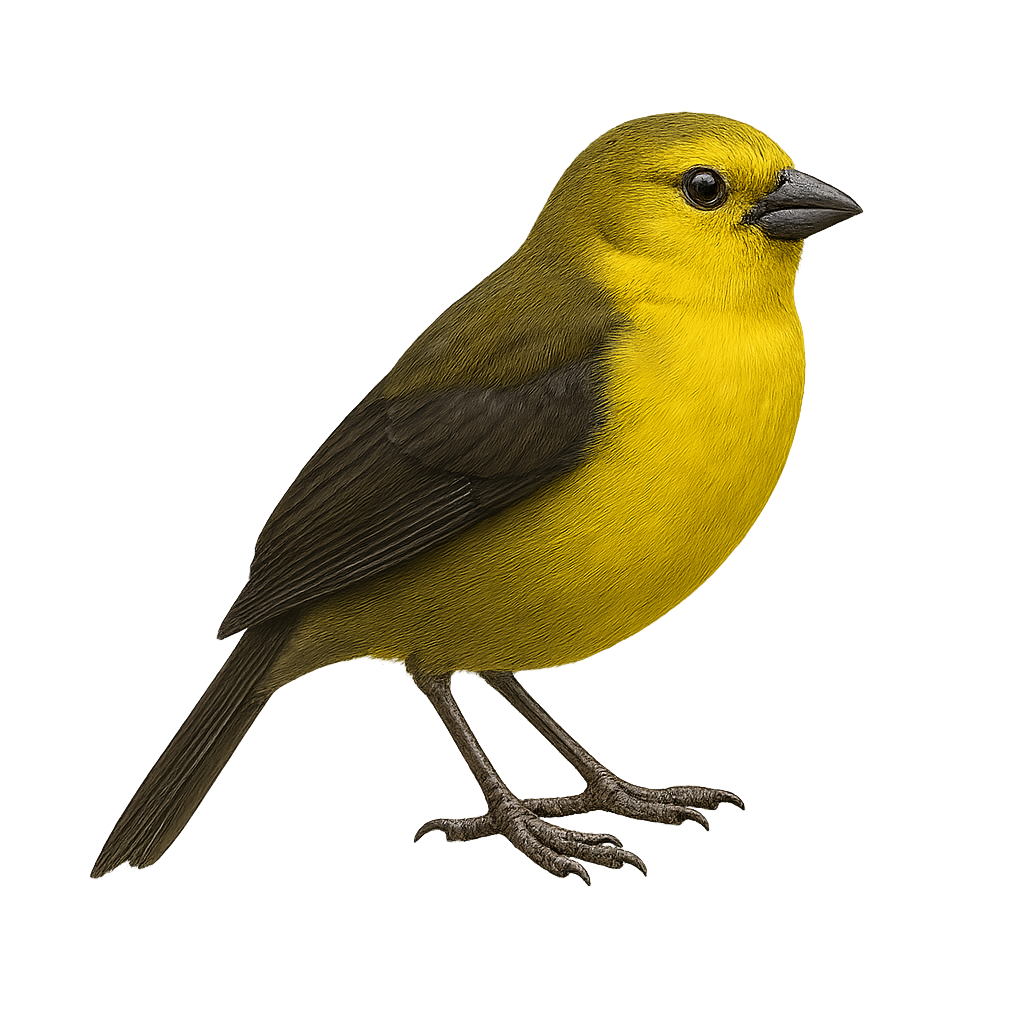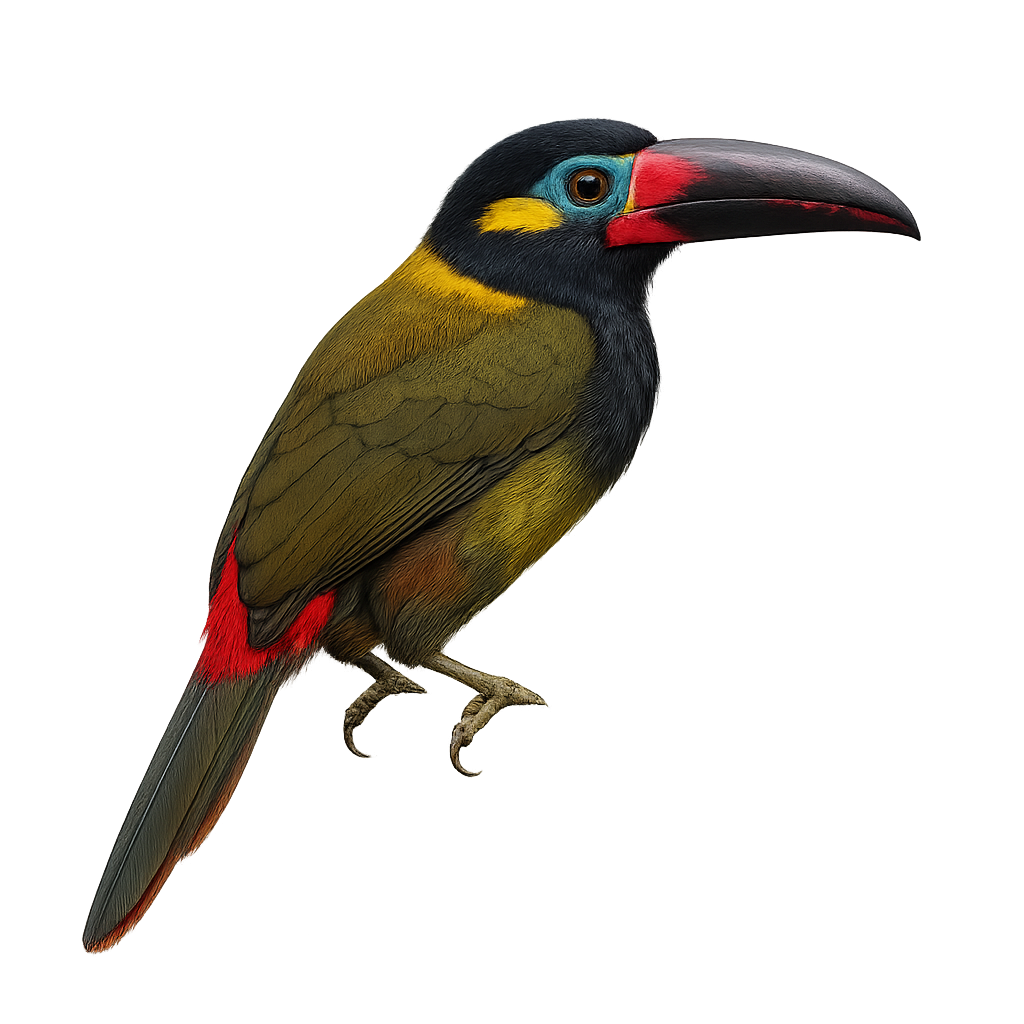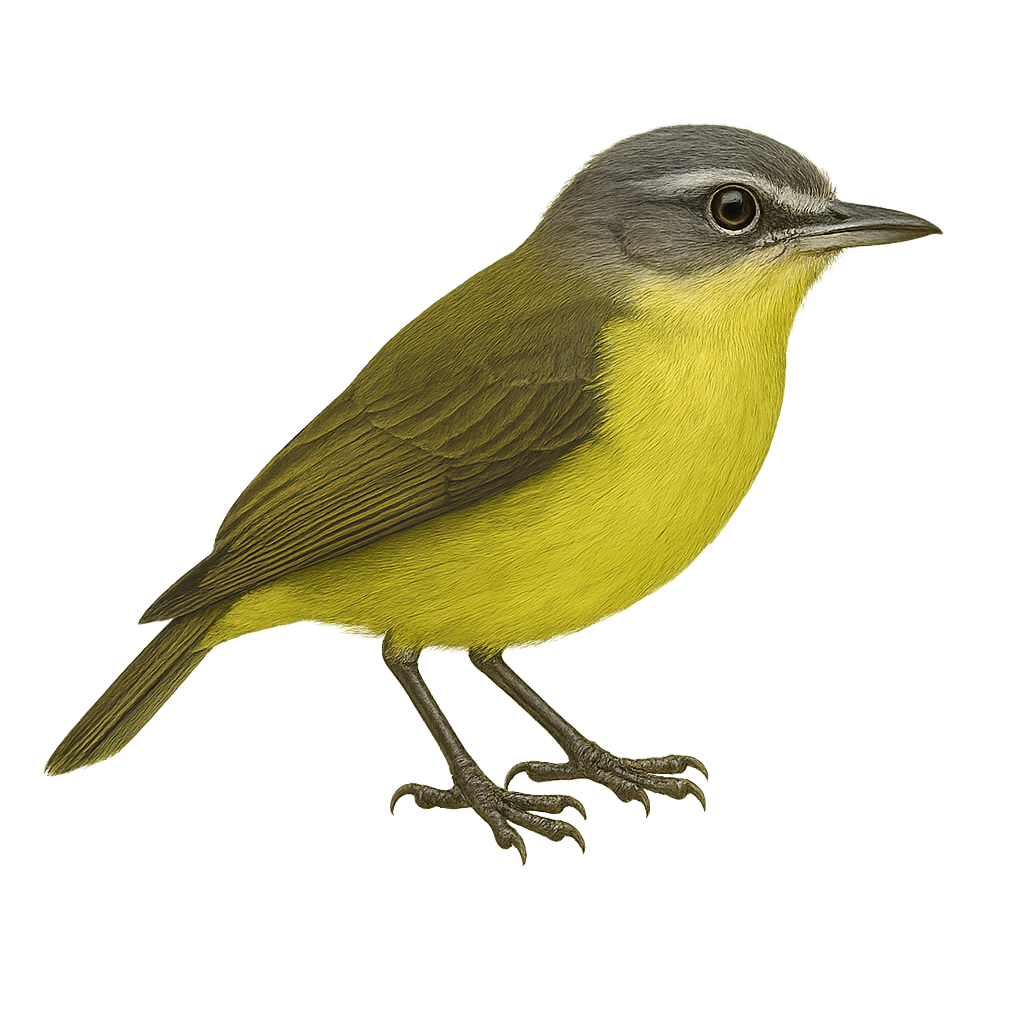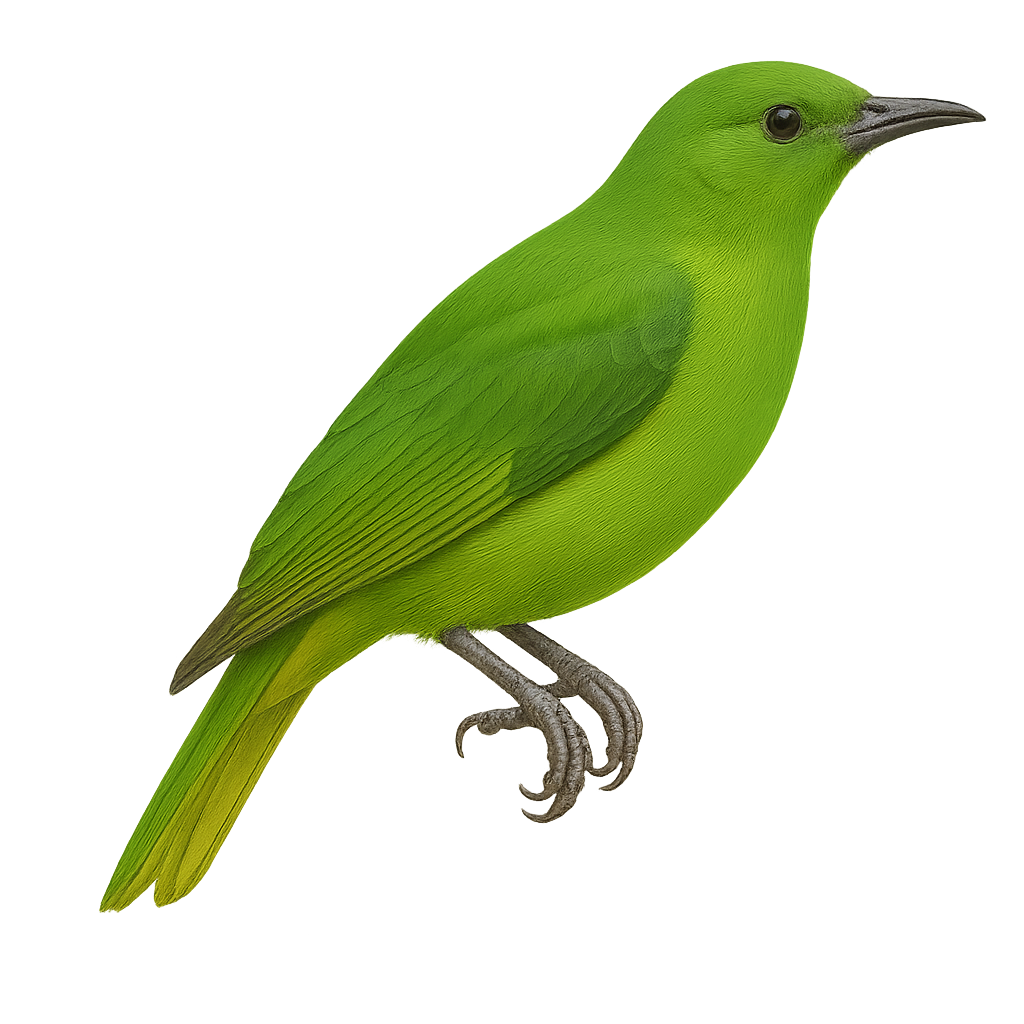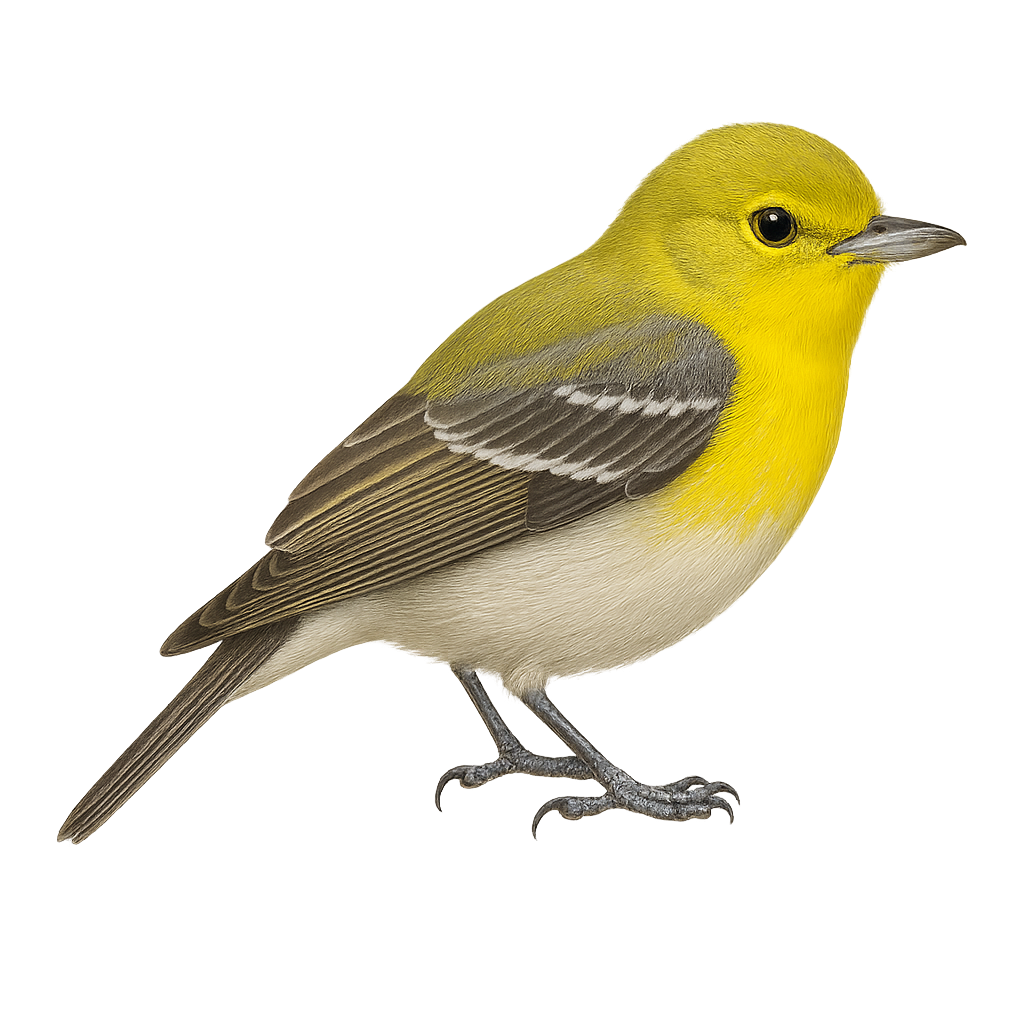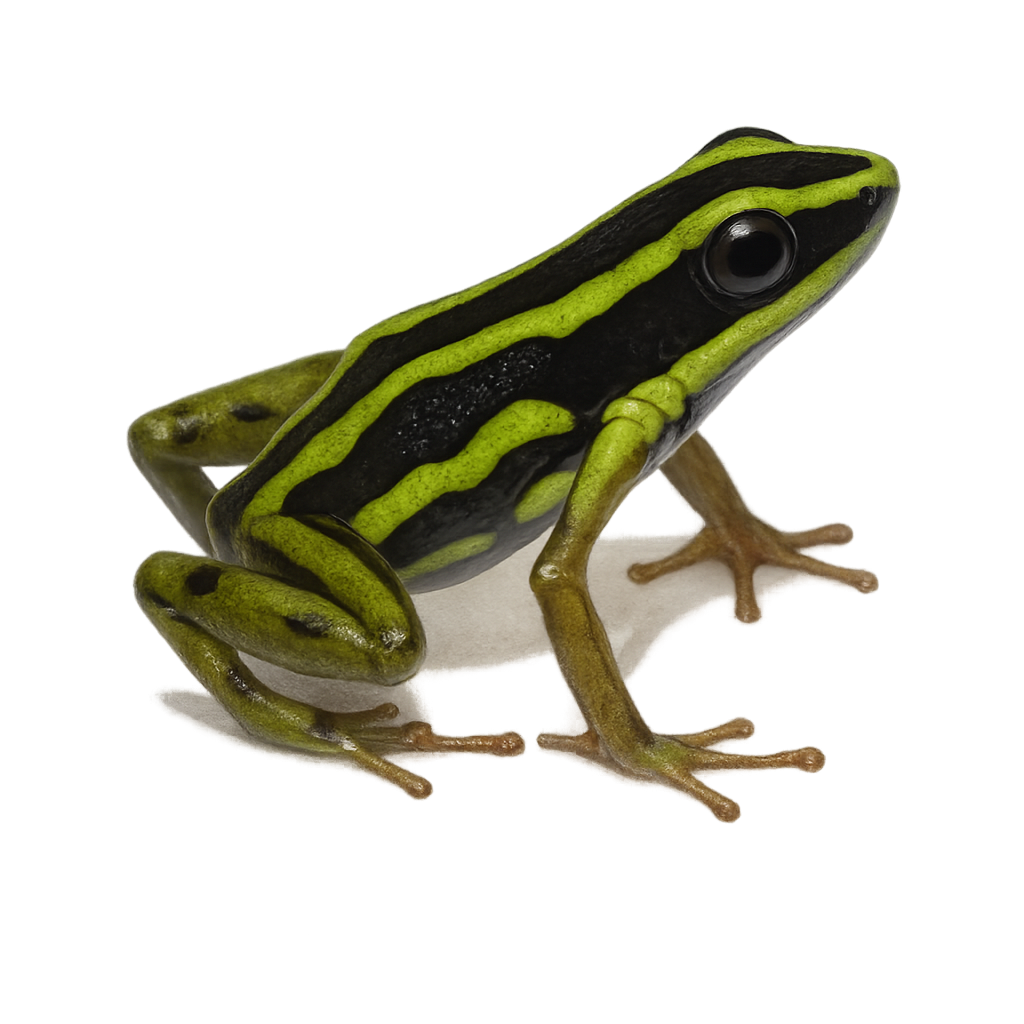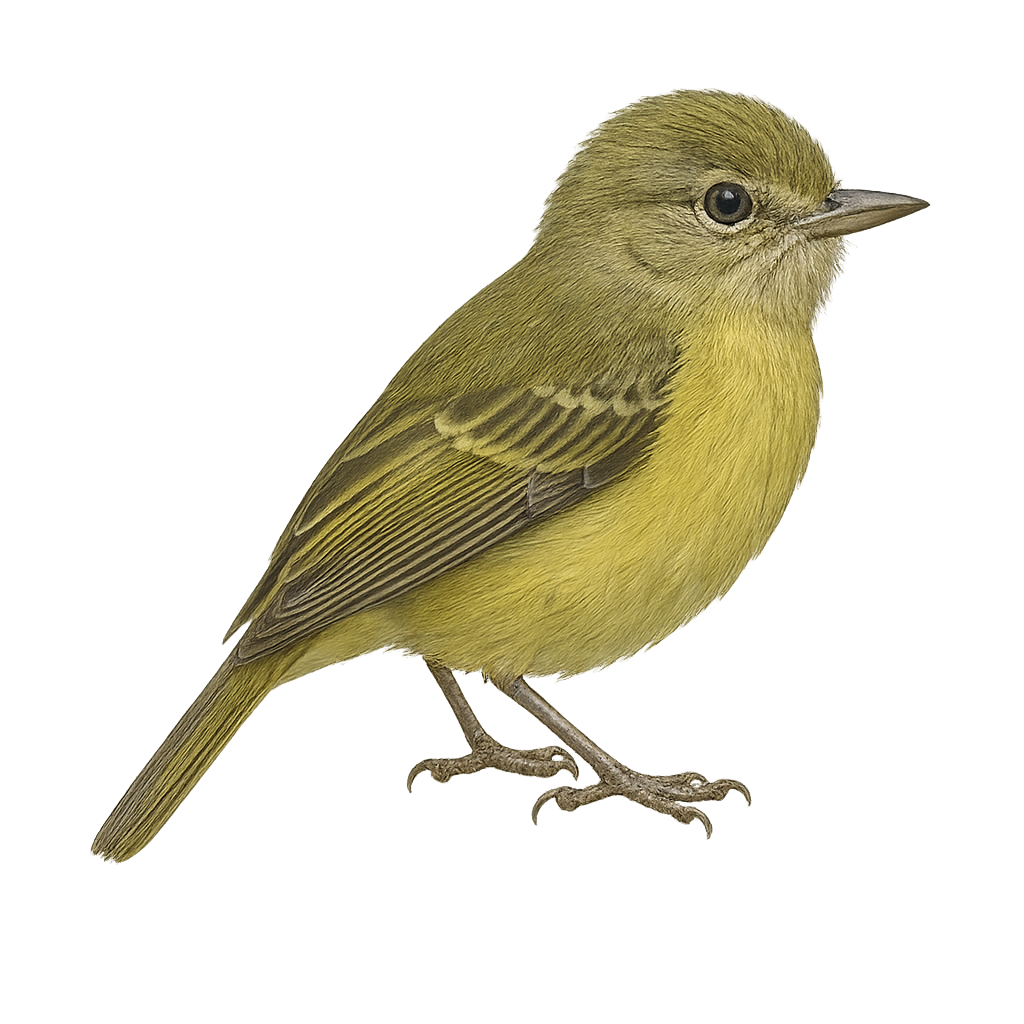The Yungas Pygmy-Tyrant, or Hemitriccus spodiops, is a small passerine bird belonging to the Tyrannidae family. It is primarily found in the humid montane forests of the Yungas, a region spanning Bolivia and northern Argentina. This bird is characterized by its olive-green plumage, gray breast, and distinctive white eye-rings. It measures about 10 cm in length and weighs between 6 and 8 grams. The Yungas Pygmy-Tyrant is an active insectivore, often seen alone or in pairs, darting through foliage in search of small insects. Although its habitat is relatively limited, it is not currently considered threatened, but deforestation could pose a long-term risk.
The Yellow-headed Brushfinch, Atlapetes flaviceps, is a bird endemic to Colombia, primarily found in montane humid forests. It is distinguished by its bright yellow head contrasting with its grey and black body. This species prefers dense undergrowth where it feeds on fruits, insects, and seeds. Although discreet, the Yellow-headed Brushfinch is often detected by its melodious song. Unfortunately, deforestation threatens its natural habitat, classifying it as a vulnerable species. Conservation efforts are crucial for its survival. Ornithologists and bird enthusiasts particularly appreciate its beauty and intriguing behavior, although it can be challenging to observe due to its wary nature.
The Yellow-throated Toucan is a colorful bird found primarily in the tropical forests of Central America, notably in Costa Rica, Panama, Nicaragua, and Honduras. It typically measures about 50 cm in length and weighs between 400 and 600 g. Its plumage is mainly black, with a bright yellow throat and chest, and it has a wide, colorful bill, typically yellow with touches of red and orange. The Yellow-throated Toucan is primarily frugivorous, feeding on fruits, berries, and nuts, but it can also consume insects and small vertebrates. It generally lives in small social groups and is an excellent climber, spending much of its time in trees. While it remains relatively stable in certain areas, it is sometimes threatened by deforestation and habitat loss.
The Yellow-eared Toucanet, Selenidera piperivora, is a bird from the Ramphastidae family. It is recognized for its colorful plumage, mainly green with yellow hues around the ears, hence its name. Its beak is robust and multicolored, typical of toucans. This bird is endemic to the tropical rainforests of South America, particularly in Brazil, Guyana, and Suriname. It usually lives in pairs or small groups, feeding mainly on fruits, but also on insects and small vertebrates. The Yellow-eared Toucanet plays a crucial role in seed dispersal, thus contributing to forest regeneration. Its presence is often an indicator of the health of its natural habitat.
The Yellow-bellied Tyrannulet is a small passerine bird from the Tyrannidae family, primarily found in the humid tropical forests of Central and South America. It is characterized by its bright yellow belly, contrasting with an olive-green back and dark wings. This bird is often seen hopping nimbly among branches in search of insects, its main diet. Although discreet, its high-pitched, repetitive song makes it identifiable. It prefers dense wooded areas and is generally wary of humans. Its breeding season varies by region but is often active during the warmer months.
The Yellow-winged Leafbird, or Chloropsis flavipennis, is a medium-sized bird, primarily green with distinct yellow wings. It inhabits tropical and subtropical forests, preferring dense, humid areas. Its vibrant plumage makes it difficult to spot in the canopy, but its melodious song often reveals its presence. It primarily feeds on fruits, nectar, and insects, playing a crucial role in pollination and seed dispersal. Although generally solitary, it can sometimes be seen in small family groups. Its ability to adapt to various forest habitats makes it a resilient species, although deforestation poses an increasing threat to its survival.
The Yellow-throated Vireo, or Vireo flavifrons, is a small songbird native to North America, easily identified by its bright yellow throat and two white wing bars. Measuring about 13 cm in length, it has an olive-green back and white underparts. It primarily inhabits deciduous and mixed forests, feeding on insects and berries. Its melodious and repetitive song is often heard before the bird is seen. A migratory species, it winters in Central America and northern South America. Although its habitat is threatened by deforestation, it is currently listed as Least Concern by the IUCN.
The Yellow‑bellied poison frog, Andinobates fulguritus, is a small, brightly colored frog native to the humid tropical forests of Colombia. Known for its striking yellow and black patterns, its skin serves as a warning to potential predators due to its toxicity. This diurnal species spends most of its time foraging for small insects and arthropods. It prefers humid, shaded habitats, often near streams. Despite its small size, it plays a crucial role in the ecosystem by regulating insect populations. Reproduction typically occurs during the rainy season, with males calling to attract females.
The Phylloscartes flavovirens, or yellow-bellied tyrannulet, is a small bird from the Tyrannidae family. It is distinguished by its olive-green plumage on the back and bright yellow on the belly, making it easily recognizable. Its modest size and slender beak are adapted to its insectivorous diet. It is mainly found in the humid forests and wooded areas of South America, often seen foraging for insects among the foliage. Although discreet, its melodious song is an indicator of its presence. This tyrannulet is an active bird, often on the move, known for its quick and agile flights.


